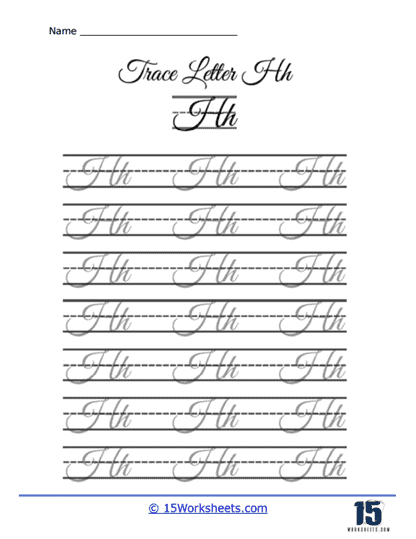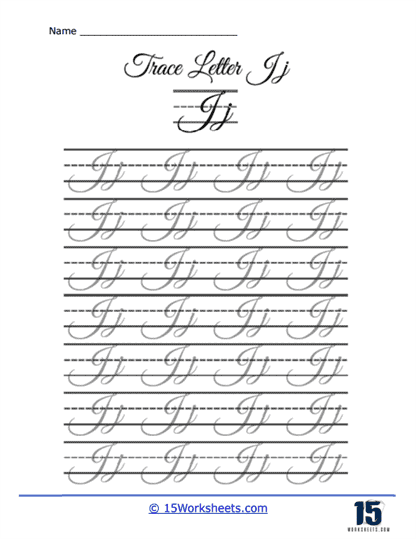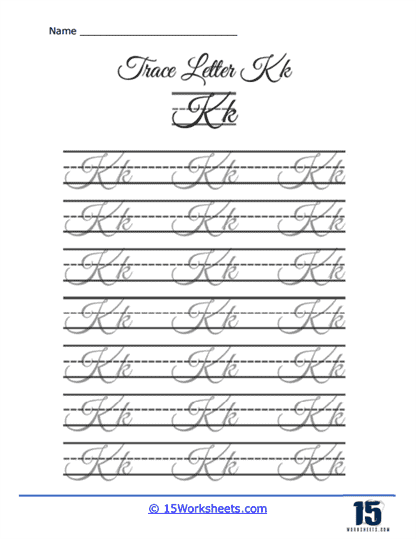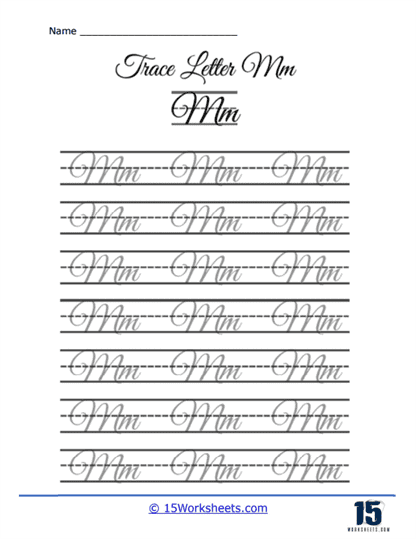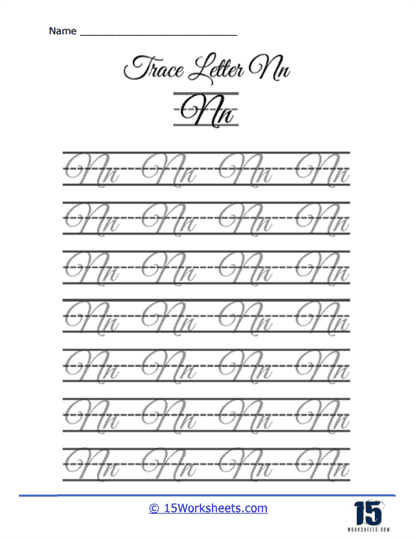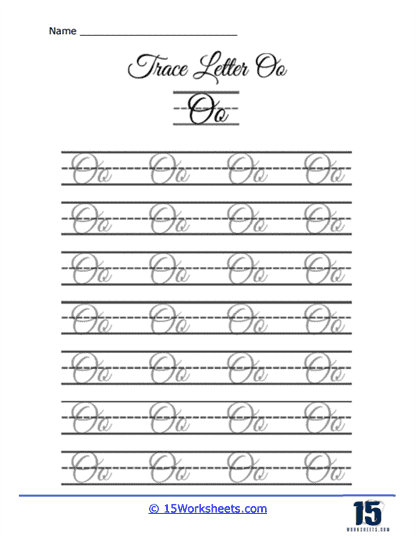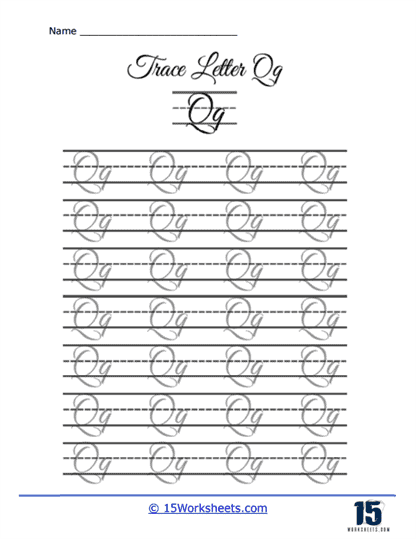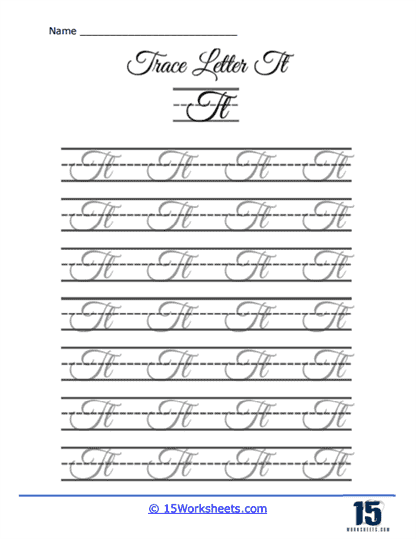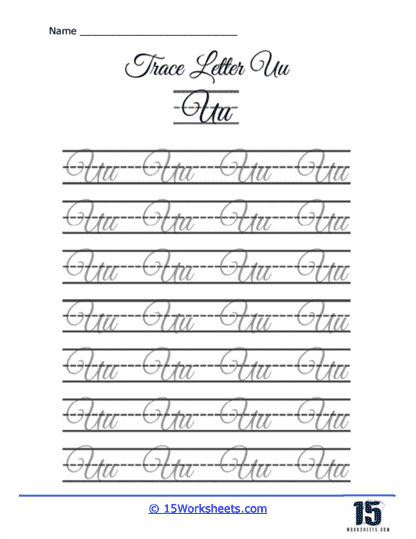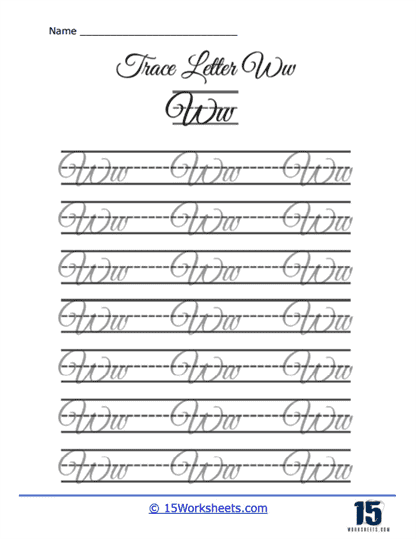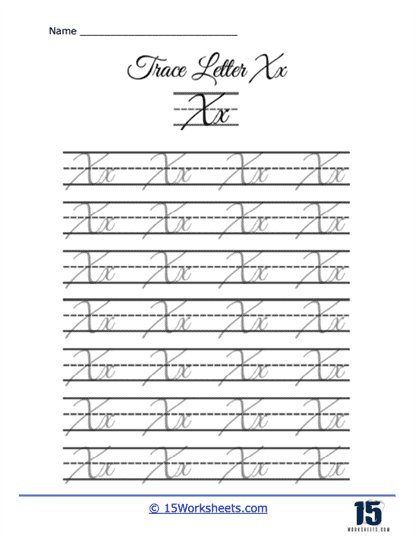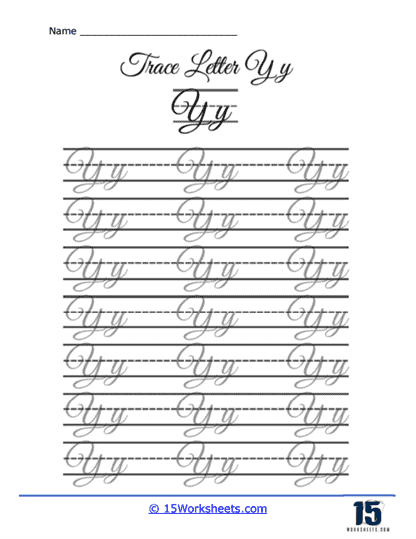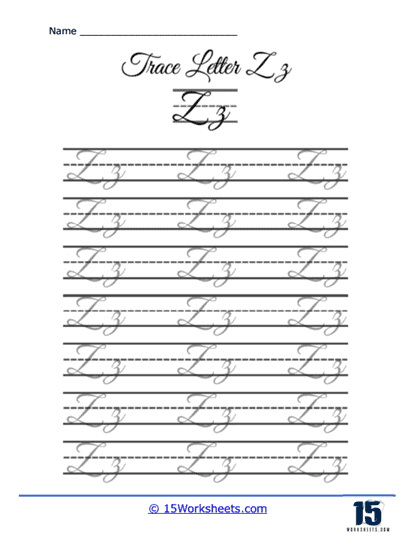Calligraphy Worksheets
About These 15 Worksheets
Unlock the enchanting world of calligraphy with our meticulously crafted handwriting worksheets! Dive into an immersive journey that takes you from mastering the fundamental strokes to crafting intricate, breathtaking compositions. Beyond the promise of enhancing your penmanship, these worksheets are the gateway to unlocking a treasure trove of cognitive and motor skills. As you diligently trace each stroke, you’ll witness your artistic expression flourishing, your focus sharpening, and your professional edge gaining a touch of elegance. If you’re ready to transform your handwriting into a mesmerizing art form, look no further – our calligraphy handwriting worksheets are your golden ticket.
Step into the realm of calligraphy, where writing becomes an art form in itself. Unlike ordinary handwriting, calligraphy is a dance of elegance and style, a symphony of strokes and flourishes. Our specialized worksheets are your passport to this world of beauty and sophistication, providing you with expertly curated guidance every step of the way. Whether you’re yearning to embellish your personal notes or elevate your professional documents to a new level of refinement, these worksheets are your secret weapon. Join the ranks of calligraphy aficionados and embark on a journey of self-expression and artistry like no other.
Types of Exercises
Basic Stroke and Letter Practice
Before delving into letter formation, students practice basic calligraphy strokes. These strokes are the building blocks of calligraphic letters and include vertical lines, horizontal lines, curves, and diagonals. Consistent practice of these strokes is vital for gaining control and fluidity. Each worksheet typically focuses on one letter at a time, both in lowercase and uppercase. These exercises involve tracing and then freehand writing of the letter, paying close attention to the thickness of lines and the elegance of curves.
Connecting Letters and Words
Unlike block style handwriting, calligraphy often involves connecting letters in a fluid and aesthetically pleasing manner. These exercises teach students how to seamlessly join letters, maintaining consistent spacing and stroke width. After mastering individual letters, students progress to forming words. This is a critical step as it involves balancing the spacing and size of different letters within a word to create a harmonious look.
Advanced worksheets often include flourishing exercises, where students learn to add decorative elements to letters and words. Flourishes can greatly enhance the beauty of calligraphic writing but require precise control and balance. Writing sentences or phrases in calligraphy allows students to practice maintaining consistency across longer text. It also introduces challenges like line spacing and word alignment.
Style Variation
Calligraphy has various styles, such as Copperplate, Italic, and Gothic. Worksheets may offer exercises in different styles, helping students explore and develop versatility in their calligraphy. Some worksheets focus on the layout, teaching how to arrange words and phrases aesthetically on a page, which is crucial for calligraphic art and professional projects.
Exercises that focus on controlling ink flow and nib pressure are common. These are essential skills for creating the characteristic thick and thin lines of calligraphy.
Benefits of Practicing with Calligraphy
Enhanced Handwriting Aesthetics
Calligraphy practice leads to a noticeable improvement in the aesthetic quality of handwriting. The skills learned can make even everyday writing more elegant and professional. Calligraphy is an art form. Practicing it allows individuals to express themselves creatively through their handwriting.
Improved Fine Motor Skills
Calligraphy, with its intricate and deliberate strokes, can significantly contribute to the development and improvement of fine motor skills in children. Fine motor skills involve the coordination of small muscles, such as those in the fingers and hands, to perform precise and controlled movements. When children engage in calligraphy, they must carefully control the pressure, angle, and direction of their writing instrument to create beautiful and legible characters. This process demands a high level of hand-eye coordination and fine motor control, which, over time, can enhance these skills.
Practicing calligraphy also encourages children to pay attention to detail and develop patience as they work on perfecting their strokes. The repetitive nature of calligraphy exercises helps strengthen the muscles in their fingers and hands, improving dexterity and control. Additionally, as kids progress in their calligraphy practice, they become more aware of their posture and hand positioning, which further refines their fine motor skills. These skills acquired through calligraphy can extend beyond the art of writing and benefit children in various aspects of their lives, such as improved handwriting, better performance in activities that require fine motor skills, and enhanced overall manual dexterity.
Concentration and Focus
The detailed and mindful nature of calligraphy practice fosters improved concentration and focus, skills beneficial in various aspects of life and work. The repetitive and focused nature of calligraphy can be meditative and therapeutic, providing a relaxing break from the fast pace of daily life.
Calligraphy has historical and cultural significance in many societies. Learning it can foster an appreciation for these cultures and their artistic heritage. Regular practice improves understanding of spacing and alignment in writing, essential for legible and visually pleasing text. Exposure to different calligraphic styles enhances versatility, allowing individuals to adapt their writing to various contexts and purposes.








